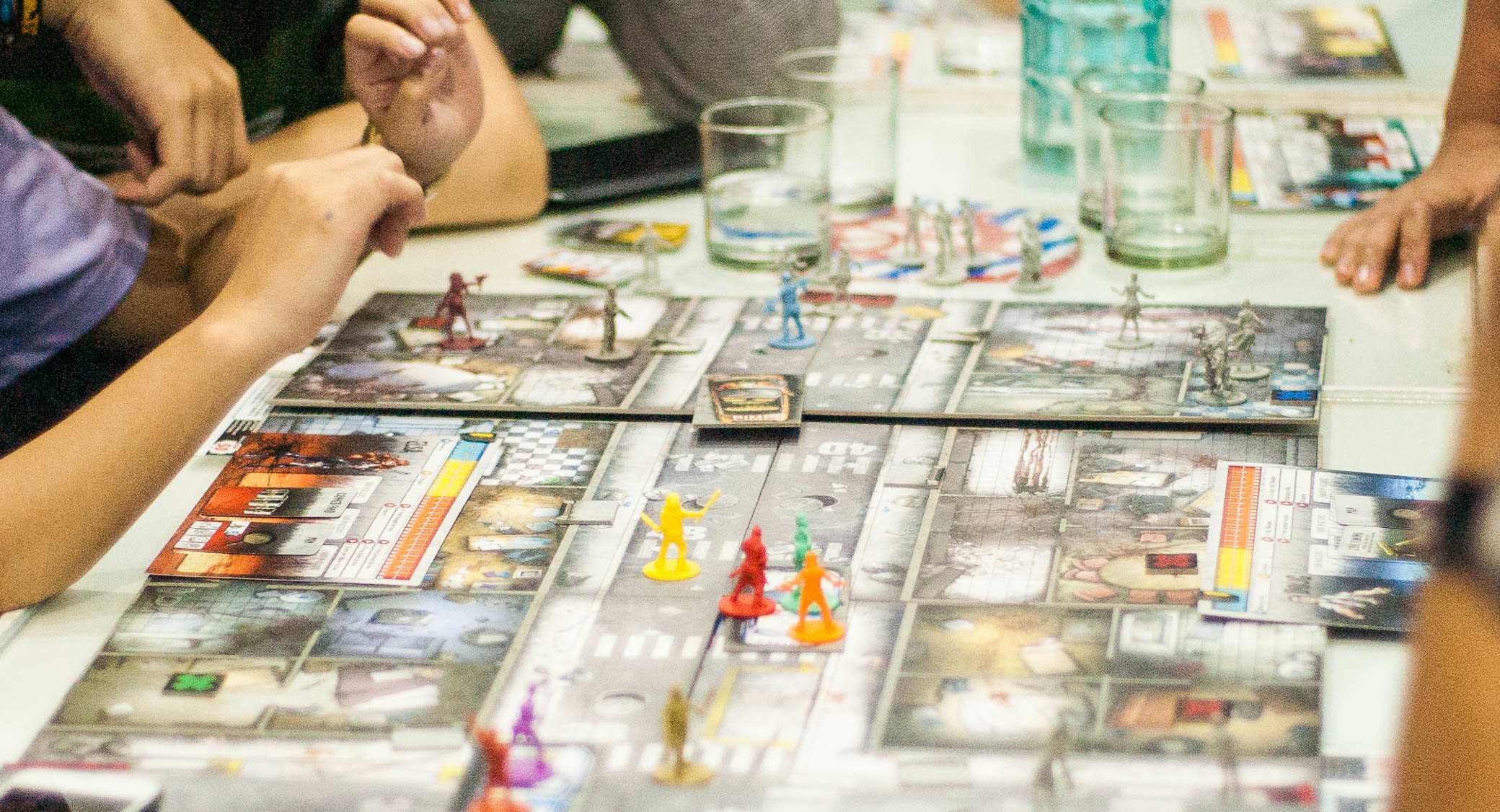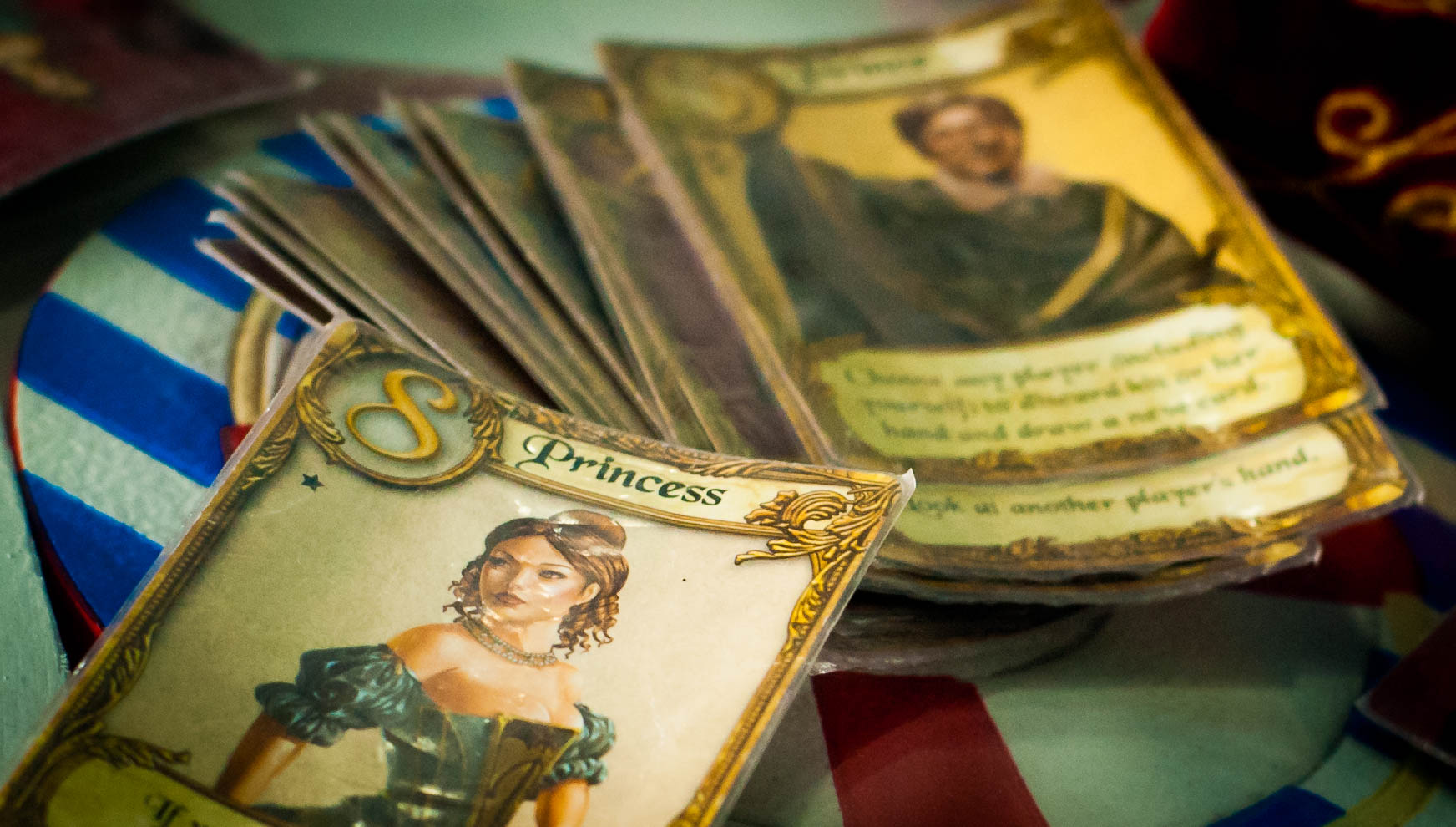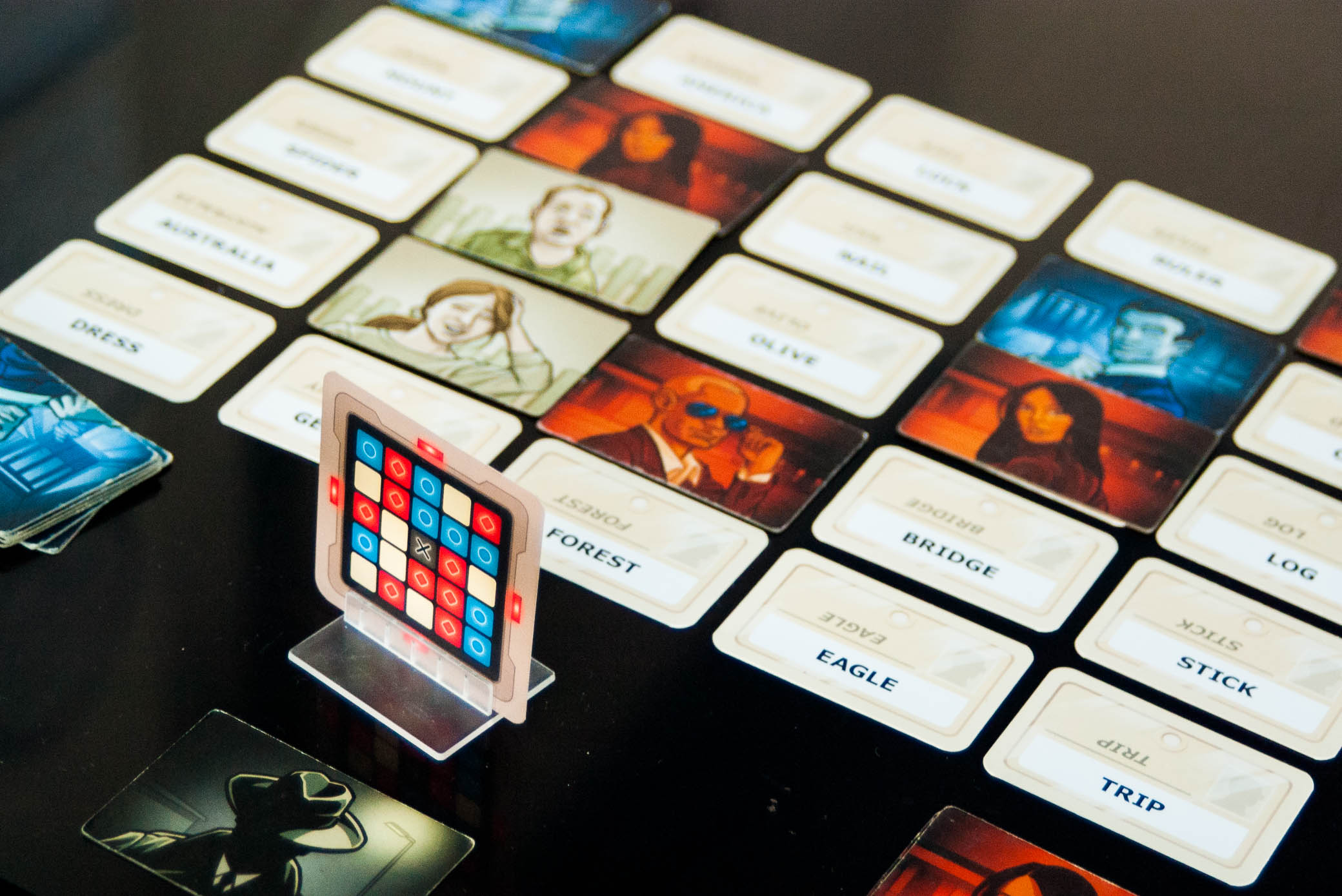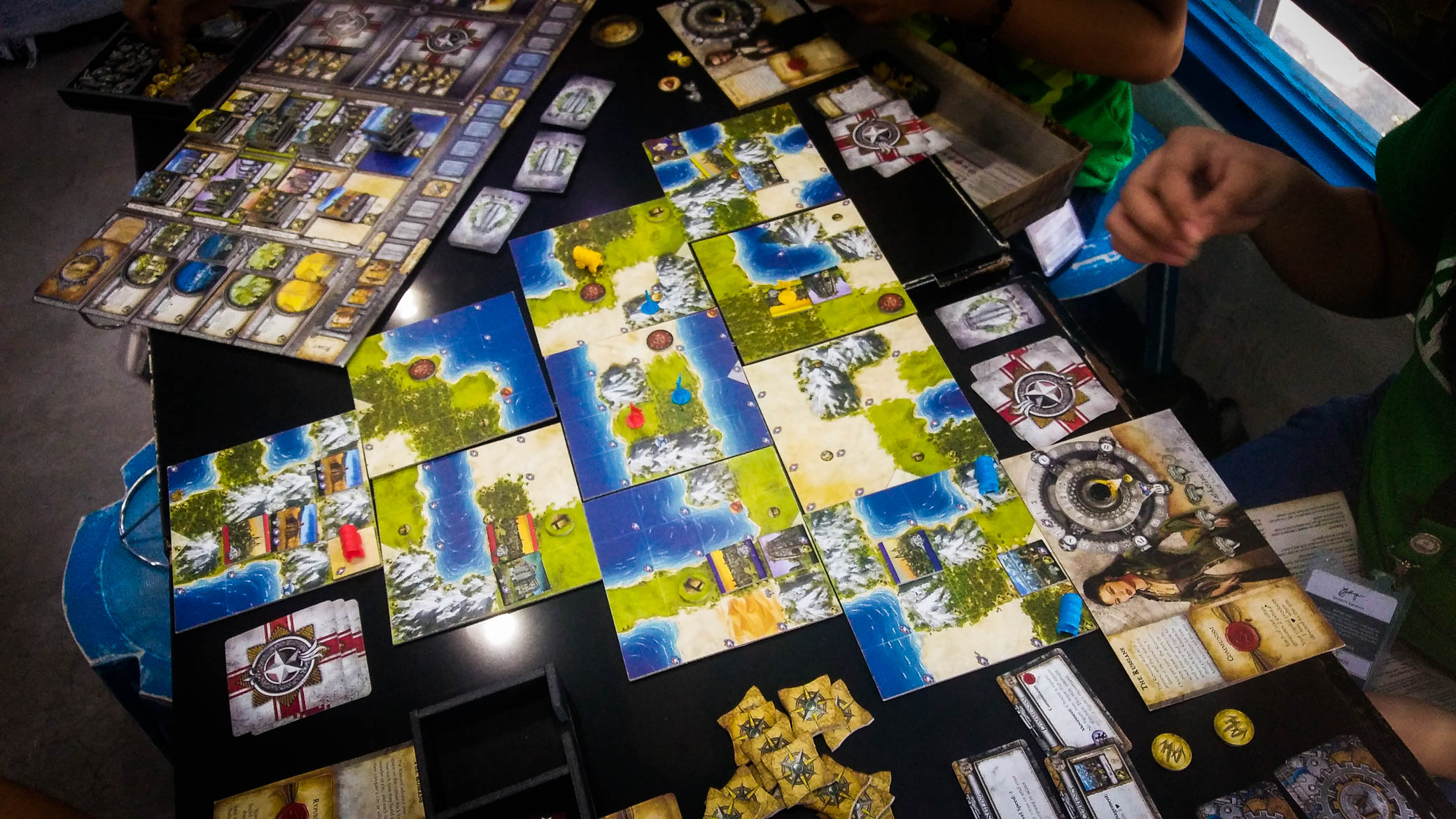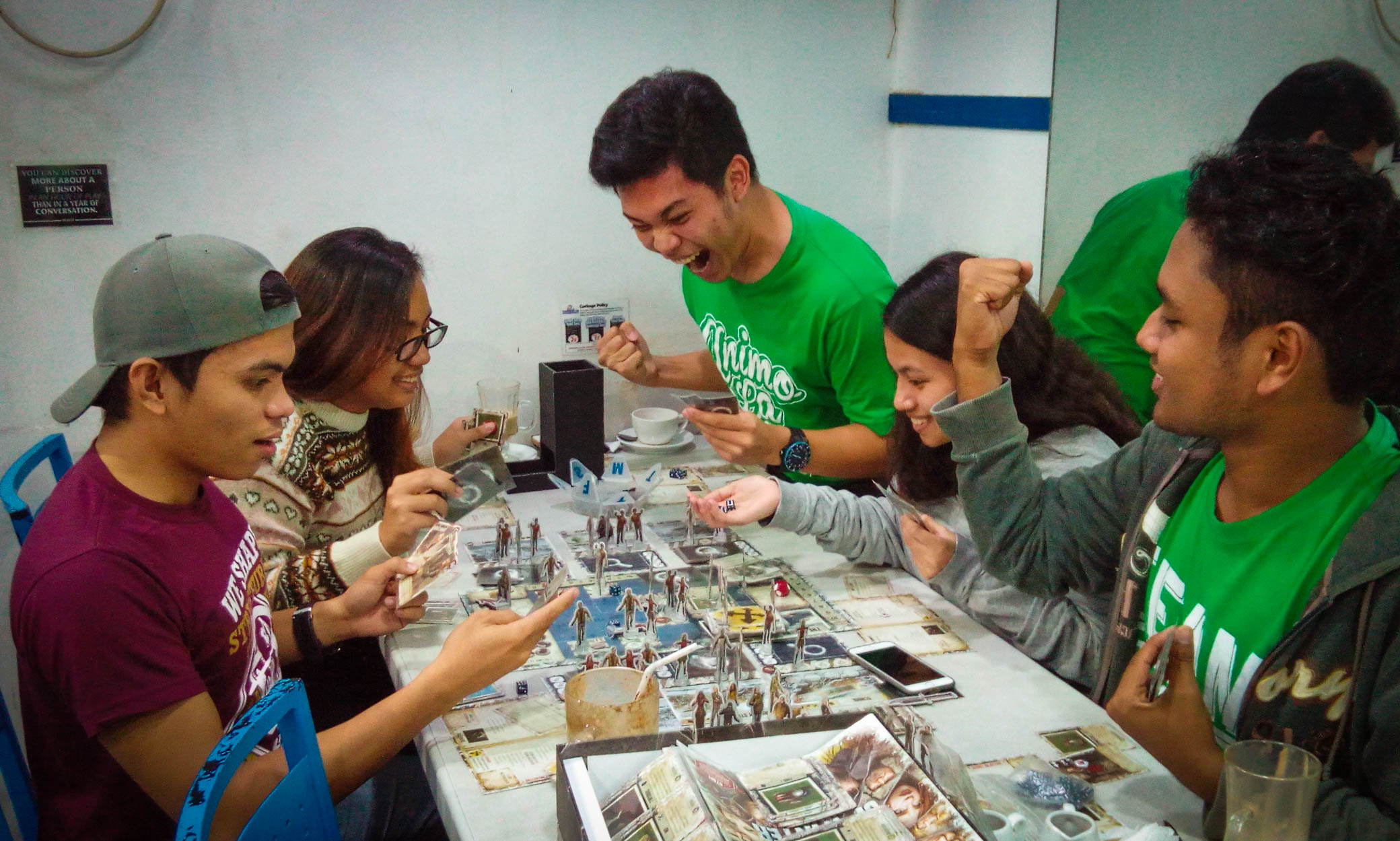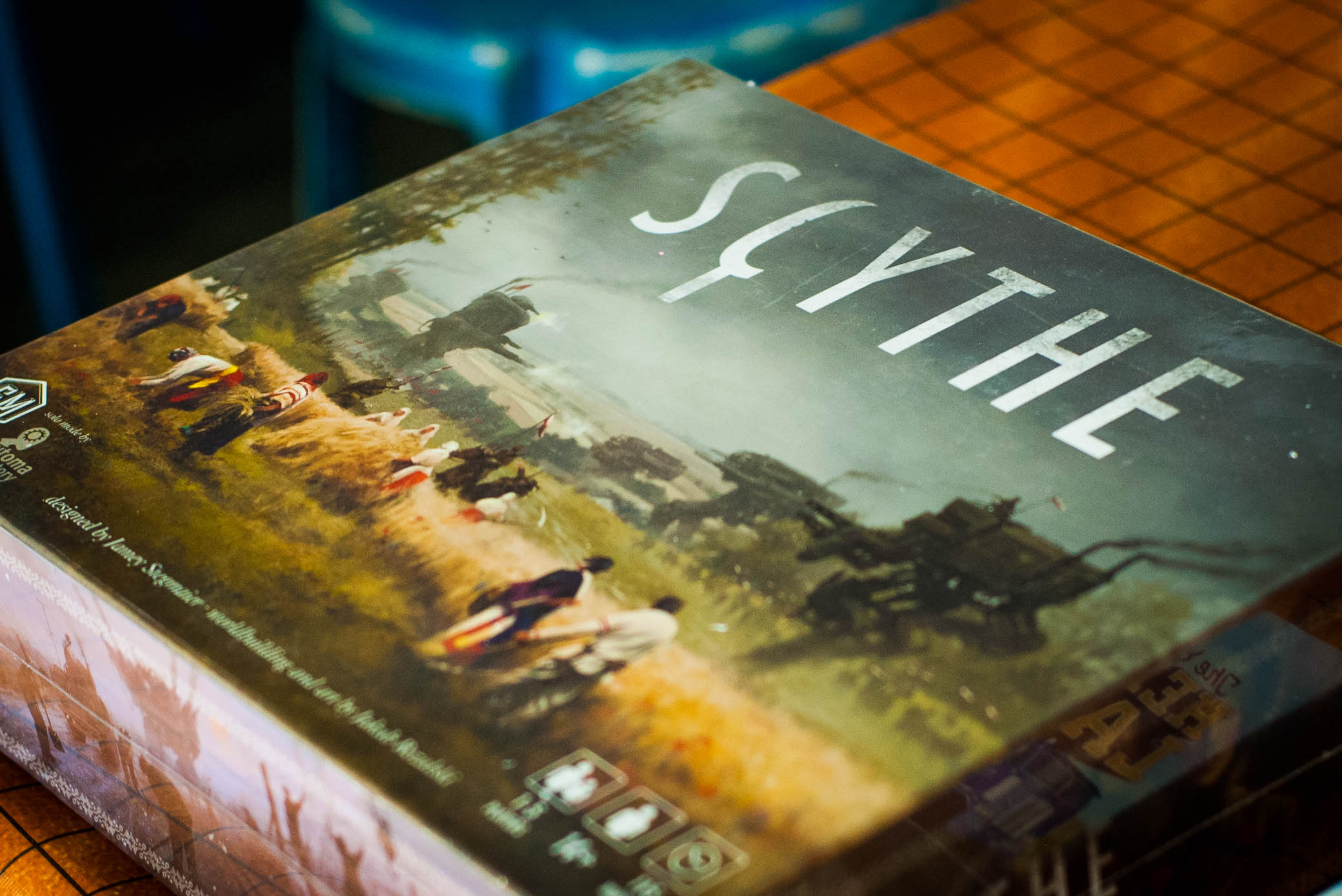
I rarely get very excited for a game. I think, the last time I got excited was Star Wars: X-Wing, and that was a few years back. What drew my attention with Scythe was the art style. Jakub Różalski’s art stood out because of how his style. The classic style of the 1920s but the mechas at the background make it look surreal. For me, this is a different take on steampunk.
The game is made by Stonemaier, which is very successful with the games Charterstone, Viticulture. They are well known for making well crafted games, production values are on the top. So, there was no suprise that Scythe was the game to try out. Before playing Scythe, I was able to play a couple of games of Viticulture, and it was an interesting game because it was about wine making. They made wine making interesting, so, I wondered what Scythe was about.
Scythe as a word means that it is a tool used for farming, to cut grass or wheat. But these are also used a weapons for war. The game itself is both. The main game is farming and area control, but war is also a choice to control the land.
The game is not goal based, rather it’s point based. There are so many factors on how to get points. There is money, achievements, structures, controlled land and more. Because of those elements, it’s hard to predict who is the winner. Sometimes it is predictable, but sometimes it’s not, it can be a surprise at times. It’s interesting that the rules even indicate that you are not allowed to count your points while playing, if you are caught counting points, you get a minus 10 as a penalty.
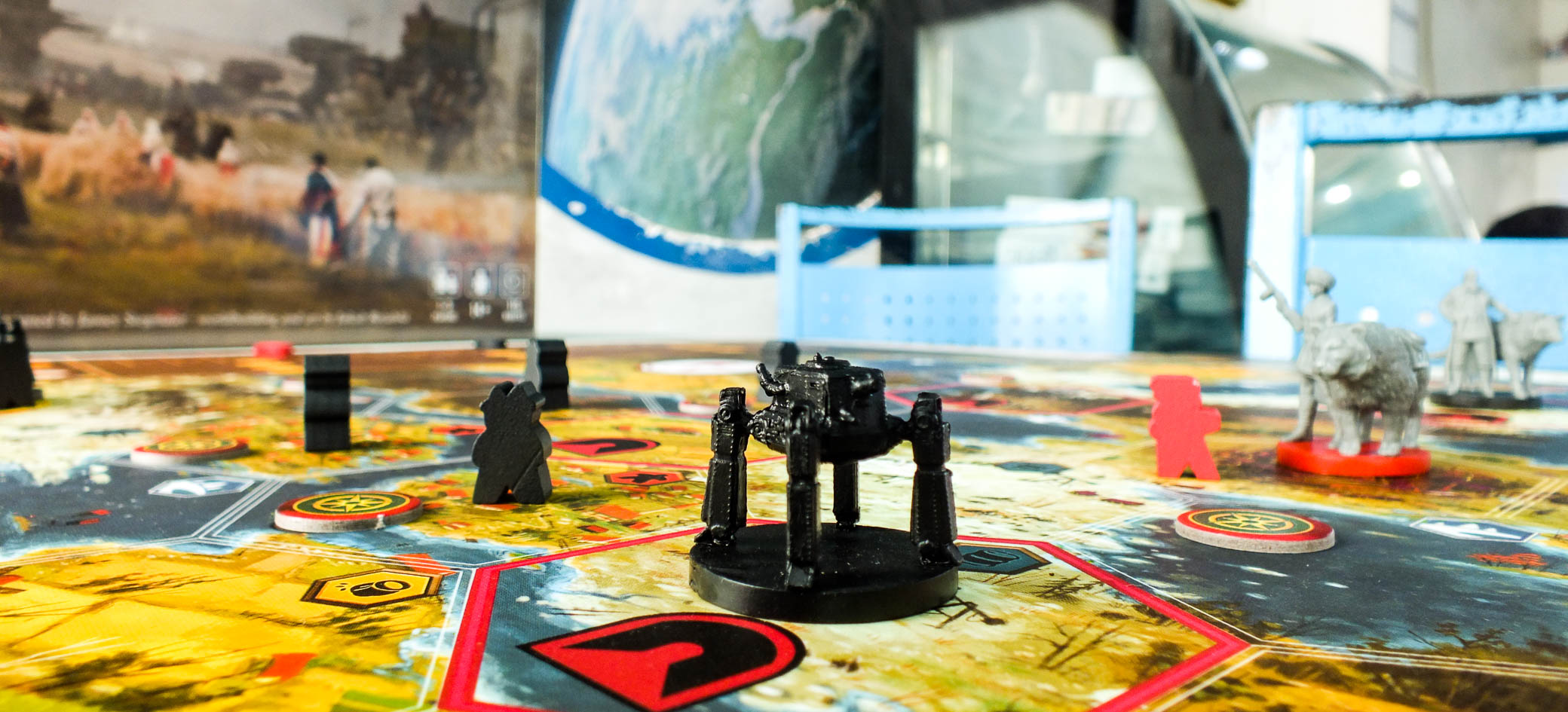
Not, about the compontents. I like the mecahs, I think that stood out for me with the rest of the game. I love mechs. I’ve been a fan since playing MechWarrior on the PC. I thought that this game is a war game because of the mechs. They were amazing in detail. Each player has a maximum of 4 mechs. Each player also has 1 character which are practically attack units similar to mechs, but with the special ability to activate encounter cards. You have 8 workers can produce resources and deploy anything that you build. Each player also has 6 star tokens (indicates achievements), 6 techology cubes (used for indicating upgrades), 4 building tokens, 4 recruit tokens (this indicates and ongoing upgrade that affects you and your neighbors), 1 power token, 1 popularity token, 1 action token. All of these components for each player. The game has 5 sets of these for 5 players. There’s a lot of resources, 20 for each type. Which are food, metal, wood, and oil.
Other components are combat cards, objective cards, encounter cards, factory cards, 2 power dials and coins.
The board game itself is large. I was amazed that it even fit on our restaurant tables. And it’s possible to surprise you when you open up the game for the first time, because there is another bigger side, but it can be only playable if you buy a map extention. Yup, the larger map is not playable unless you buy the add on, and it’s not even included in other expansions. I would have understood if they added the additional map with other expansions, but no.
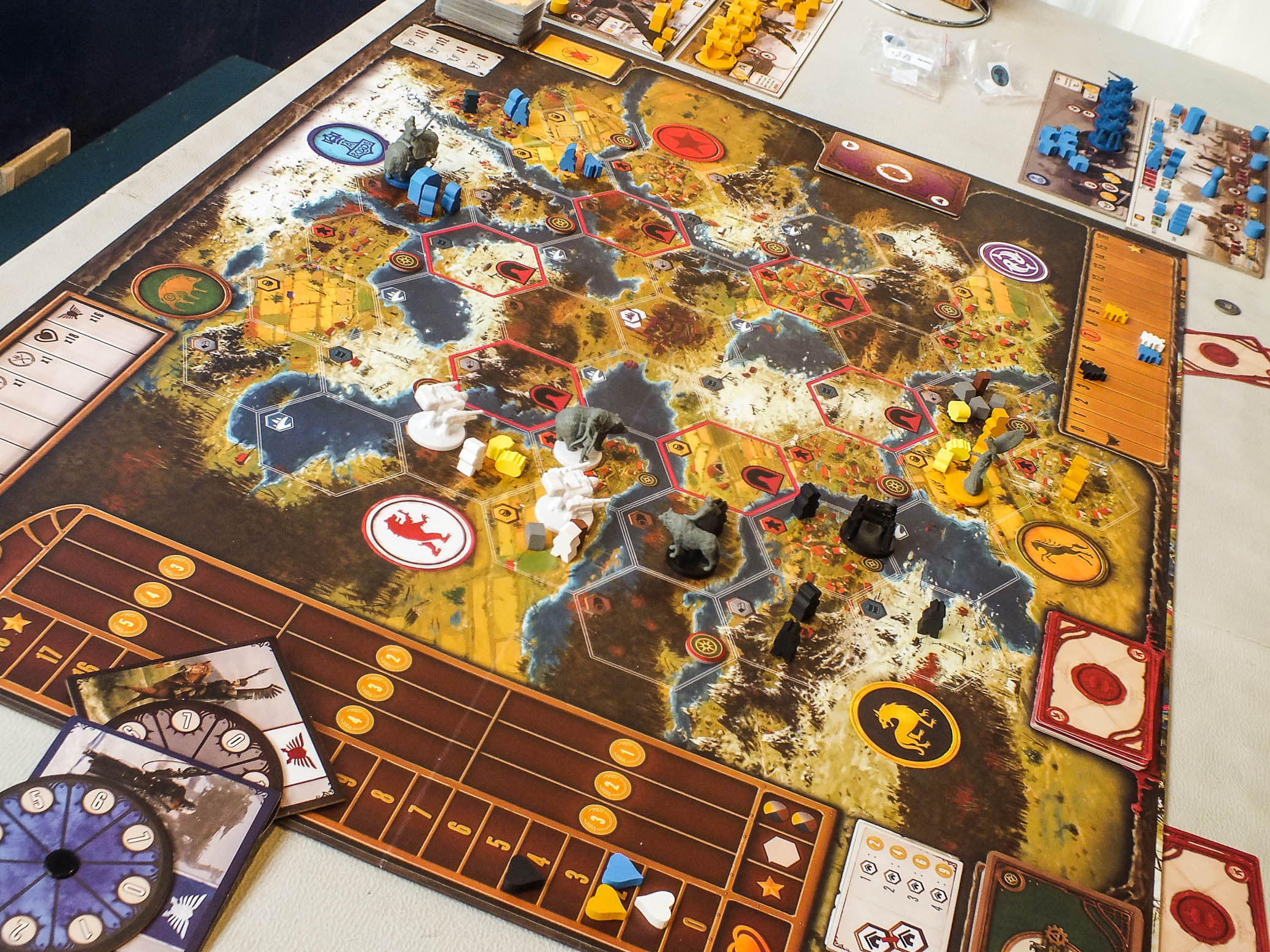
It’s interesting when you see the board though, because even though there are 5 players, the board is prepared for 7. I generally don’t like that idea. It means that you must pony up more cash to add more. I like the idea that it can be played with 7 players, but intentionally removing 2 for the sake of getting more feels like buying a full game and you discovered that they intentionally cut the game, so that they can make a paid DLC. So, I’m not happy with that.
The game can take a while to play, around 3 to 4 hours on the first try, but can be just 2 hours when you are with players who are familiar, but if you are seasoned players, it can be just an hour.
Gameplay is actually easy, but there are a lot of choices. The choices can get a bit complicated especially on the first time you hear about it. Each player gets 2 playmats. 1 playmat represents their faction/color and special abilities, 1 playmat is for moves. All of them are unique, so there can be several types of game styles in this just one game (even withou the expansion).
The faction map includes all the unique abilities including starting items, it is where you place all your other standby components like money, the 6 star tokens, and the 4 unreleased mechs. The 4 unreleased mechs have specific unlockable abilities which is also applied to the character. The abilities can only be unlocked by building a mech. You are not allowed to switch abilities while playing the game, so you choose what mech to build. It also indicates the immediate effect of getting recruits.
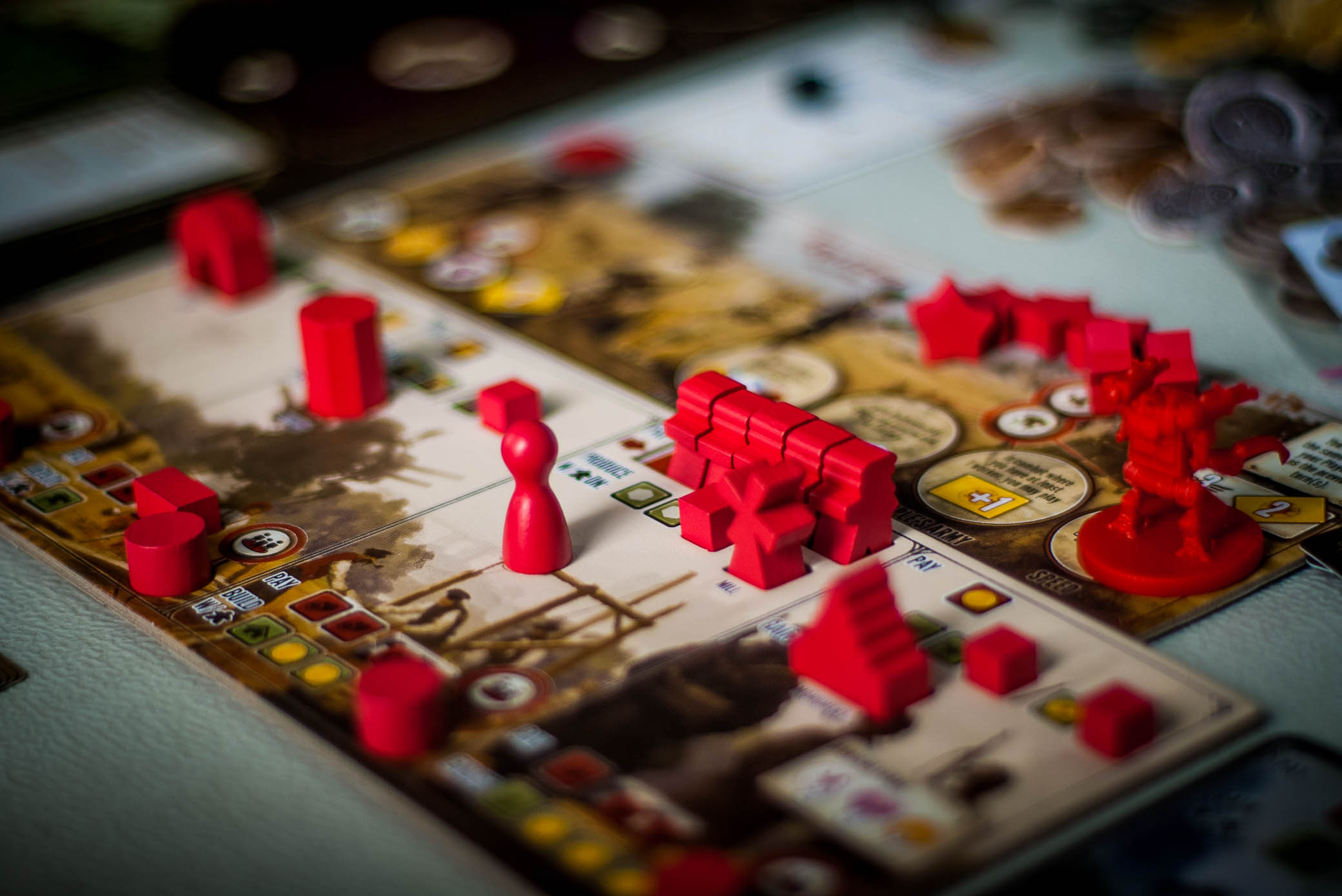
The player mat now includes the actions, starting setup and money. There are 2 types, and each type has 4 subtypes. The first one is the top row action. This includes movement, bolster power, produce and trade. The bottom row action includes upgrade, deploy mechs, build buildings, enlist (recruit). If you see a red icon, it means you have to spend. If you see green, that means you gain. If you look at each mat, the combinations of top and bottom actions are different.
Playing the game, you are to choose one section of actions, you can do the top or bottom, or do both in sequence. The tricky part is that the majority of players can’t use the same action on the next turn. You must only choose any other section, but not the one you previous used. One faction feels a bit overpowered because they are the only ones who can use the same action on the next turn.
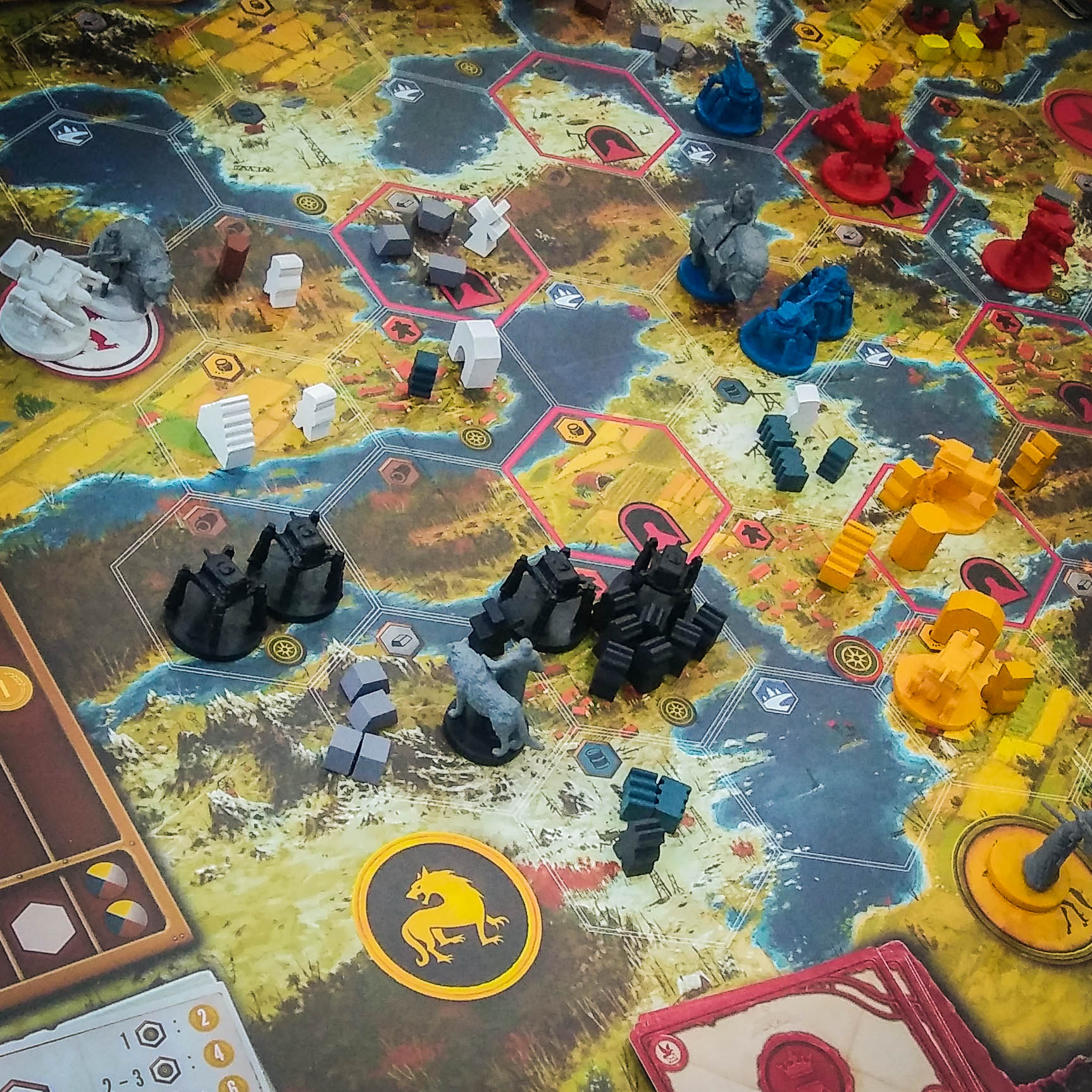
At the start of the game, you generally just use top actions to be able to get enough resources and move around and about. But in general, you are pretty much stuck in one particular area. You must be able to get enough resources to build up mechs, to be able to travel on rivers; or build tunnels, to reach different areas on the map.
You can upgrade your playstyle too. You need to do upgrades by earning enough oil and spending them to move any technology cube from the top action to any upgradable area of the bottom action. Moving this cube can increase what you gain from the top action, and decrease the cost from the bottom action. This in itself is engine building. You are improving your gameplay by upgrading your technology.
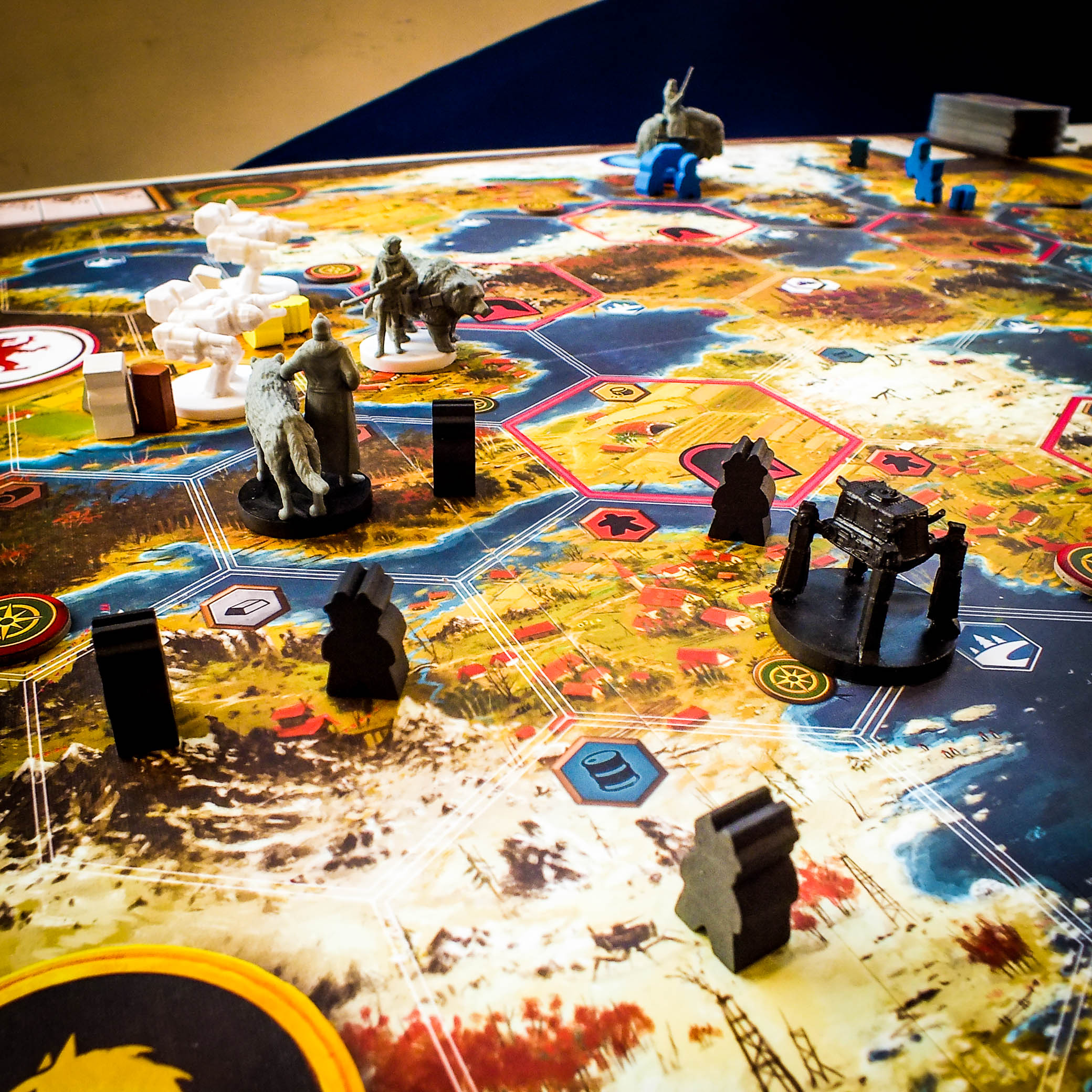
Buildings have special actions too, each of them has a specific action, and the same time, it affects your actions too. Building a mill, increases a resources that you get, but the mill only gains a resource where it is standing on. The tunnel allows you to travel to other tunnels found on the game, The Armory gains you power. The monument gains you popularity.
Producing workers is a bit tricky, because the more workers that you get out in the game, the more you will loose whe you produce resources. At some point, you may need to spend power, popularity and money each time you try to get any resource.
Enlistment is tricky too. This is something that you have to keep your eyes open about. You must monitor the players at your left and right and check their actions. If they have done a bottom action that has an enlistment similar to yours, both or the 3 of you will get a bonus effect with money, power, popularity or combat cards. I think this is just to make sure that all players are paying attention, if everyone has enlisted all the possible recruits, then everyone benefits with almost any action that has been done with the bottom action.
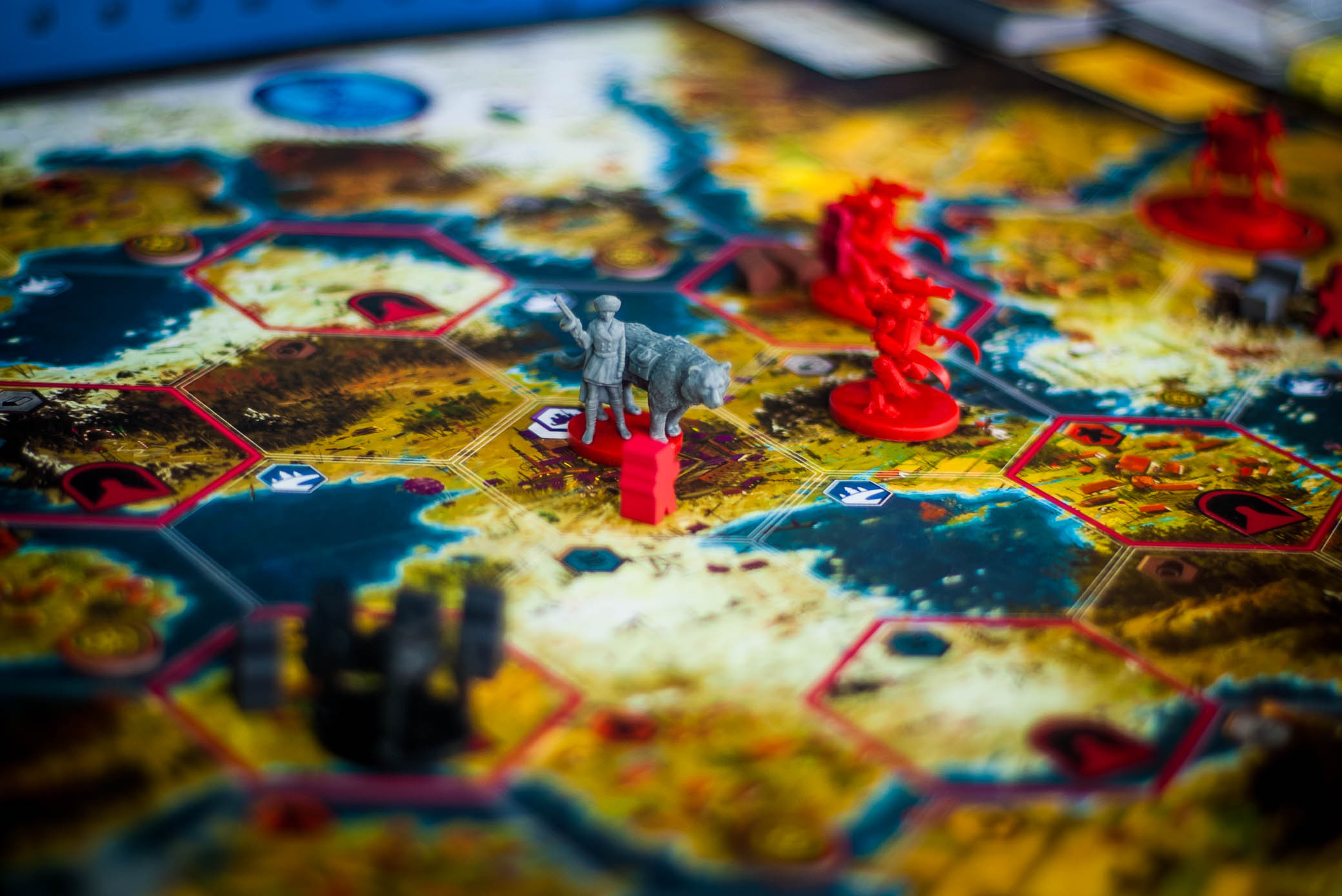
Combat is only done with mechs and characters. Once ones players movements is done and if they occupy the same space with another player, then they count how many mechs and characters are in the area, they will use that many combat cards. They choose which combat cards to use, but it must not be revealed yet. They must use the power dials and indicate how much power they are willing to use up and their combat cards will add more power to that. Once both players are ready, they reveal at the same time and compare. The highest value wins, all units must be returned to base. No deaths in this game, they only retreat. Workers can’t fight. but one faction can actually help with the fight, but cannot trigger it. Triggering combat reduces your popularity by 1. The combat is a bit uninspired, and a tad predictable. It did remind of combat in Blood Rage, but that game has a more exciting combat system, since you can surprise your opponent with a card that eliminates all power cards. This one has nothing much except power.
You can build up popularity, build mechs, do objectives, get resources, and more. You can also try to get the factory, which is located at the center of the map. If you control the factory, you will get a new type of action added to your playmat. So, instead of just 4 types of actions, now you have 5. Also, anyone who controls the Factory at the end of the game gets 3 points.
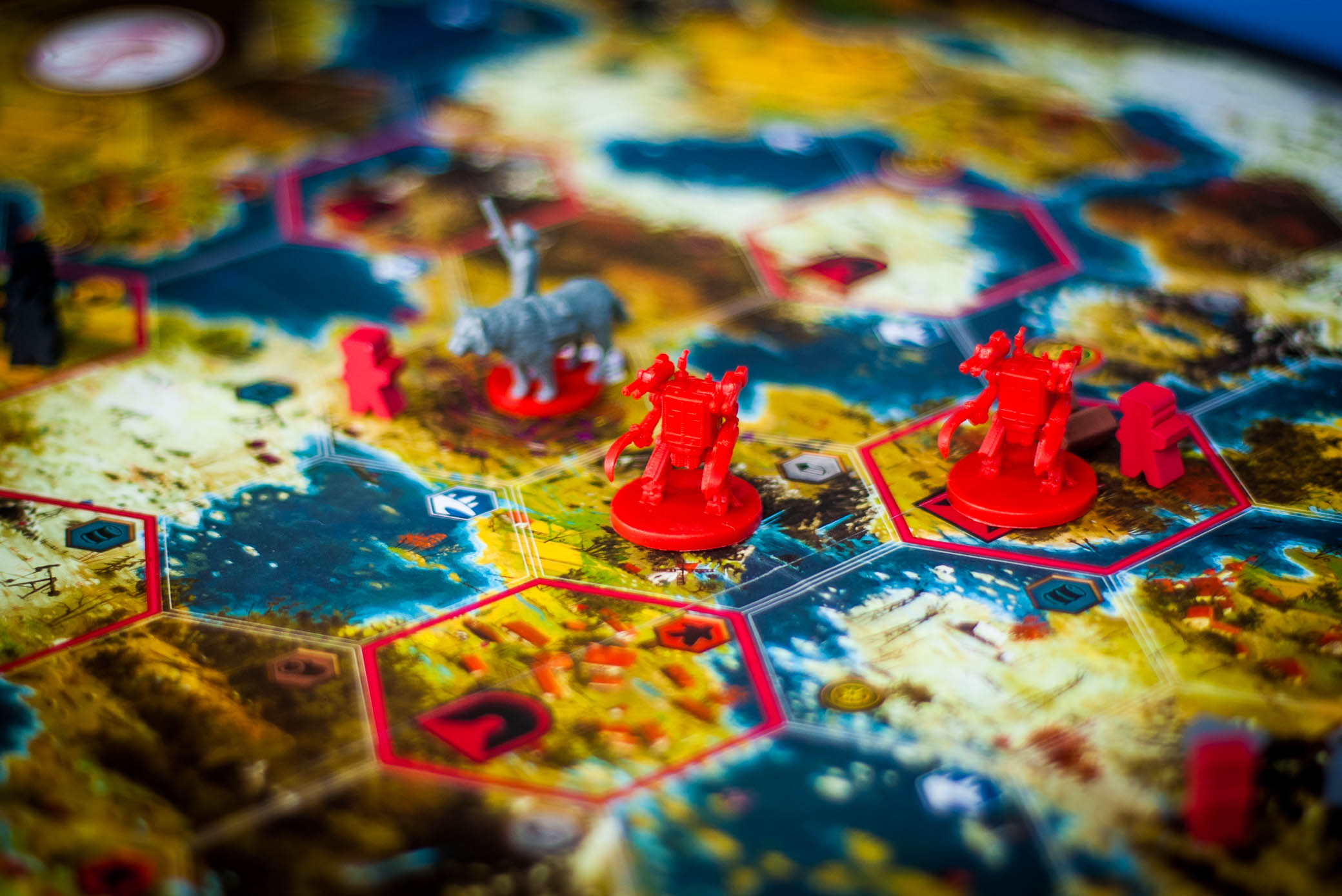
To end the game, the trigger is basically a list of achievements. If someone makes 6 achievements, the game immediately ends. We cound the money, and we convert a lot of the achievements into money and count the points from there. Sometimes, rushing the game might not be the best idea, but it is an option. The first time we played it, we didn’t want to end the game, we just kept on playing and tried to stay away from finishing the game because we were having a lot of fun already.
Oh, there is also a solo mode. They call it Automata. It’s a separate set of instructions on a vitual opponent. You can actually use this virtual opponent even if there are more players. These virtual opponents can fill in the gap if you want more players in the game even if there are no other players. The instructions are a bit long, but the gameplay mechanic is that there is a separate set of cards for the automata. Once a virtual opponets starts their turn, you pick up an automata card and follow the instructions based on symbols that you see. There are conditions like if you are this faction, you get an extra action, if not, do this action. And once they reach a certain level, you will use the opposite side of the card which is a more aggressive action than before. The general idea of the Automata is that they will try to control and protect the factory.
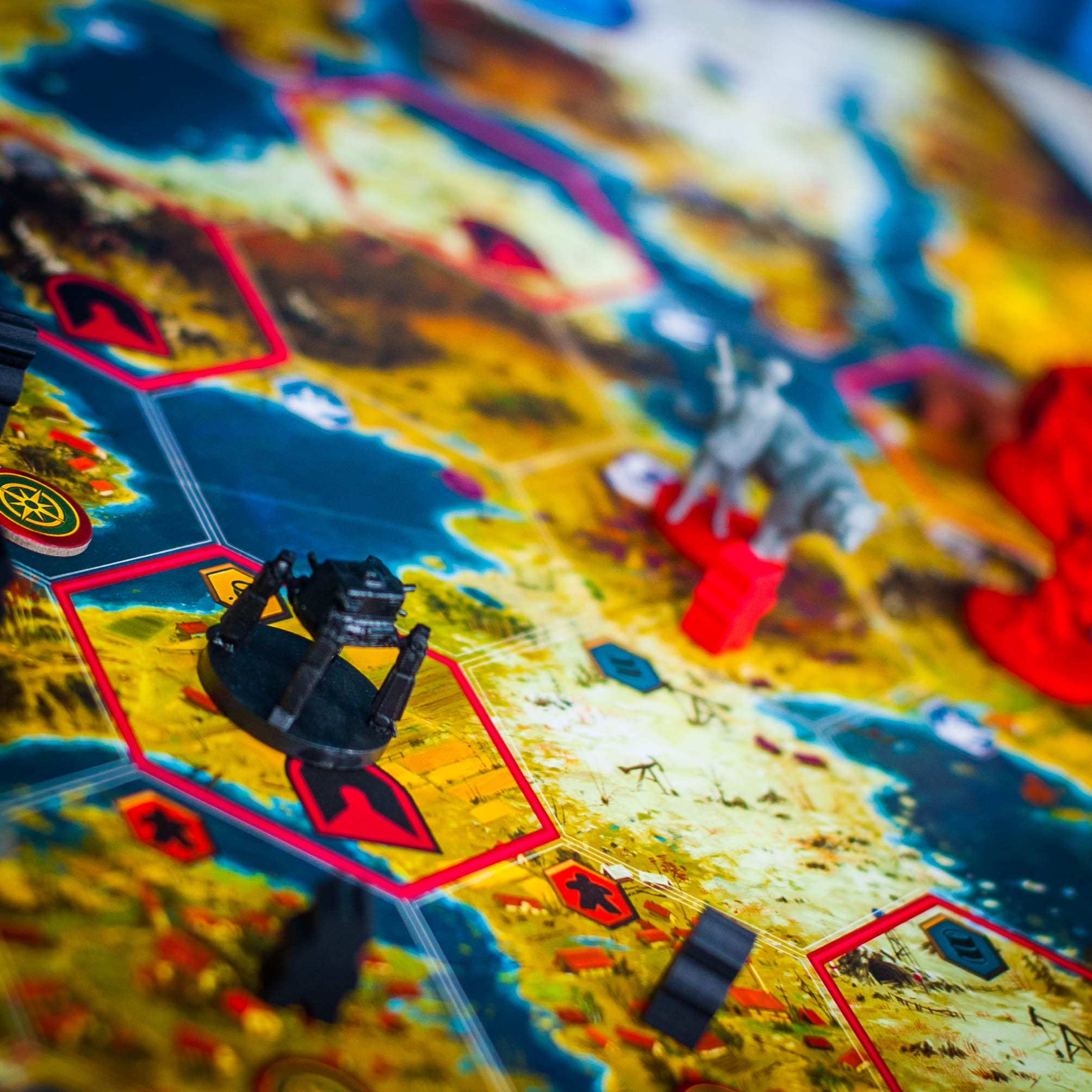
There are a few problems, it’s not a perfect game. I think I like X-wing more, but because X-Wing is a more expensive game to get into, this is a my second favorite game. The flaws are obvious, but the gameplay is enjoyable to the point that I enjoy trying to prolong the game, like the feeling I have in Civilization, giving me that feeling of one more turn.
What I like about the game is that, there are so many elements to the game. I like the engine building part. I like the fact that I can improve my gameplay, so I don’t have to spend too much later in the game. I like area control games, but you might need to fight for control the territory. I also enjoy the idea of battle mechs fighting to control, but fighting can be a disadvantage to you. You may not fight, but you must be also be prepared for one. The components are amazingly done.
Overall, I do recommend this game. It’s not a perfect game, but it is really good regardless of the flaws that I found. It’s not for everyone since it can take a while to get into all the intricacies of the game. I do plan to get expansions for this. Looking forward to try those too.











